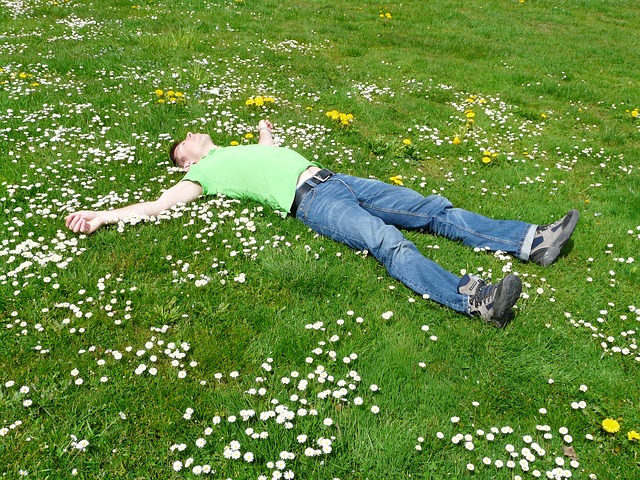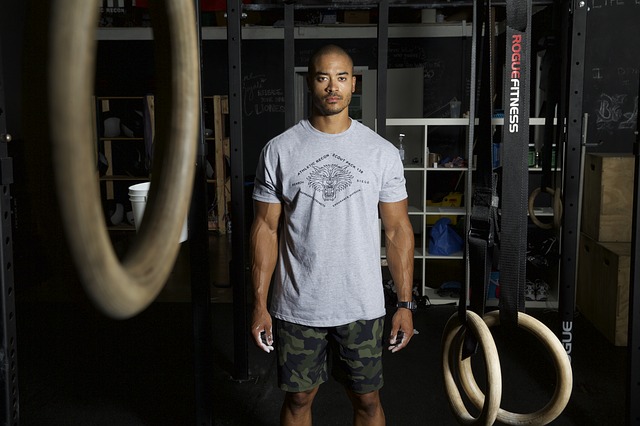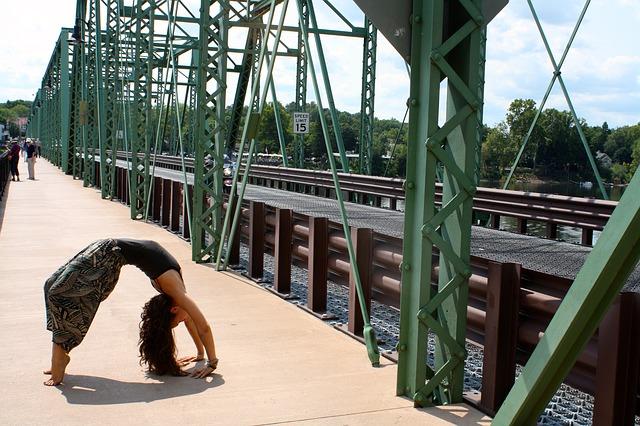Blog
The Physical Side of Stress
Stress is a key contributor to subluxation of spinal joints
While not all stress is bad, very few of us know how to achieve a balance between good and bad stress. By all accounts stress leads to tension and this manifests itself in your muscles: muscles all over the body contract in response to stressful stimuli, whether it be emotional or physical. A body rife with muscle tension is bound to be pulled out of balance- and in this scenario, a likely outcome is that your spinal joints can lose their normal position and exert pressure on spinal nerves.
Recognizing the Signs of Stress
Stress is inevitable; let’s talk about limiting it’s presence
Stress isn’t all bad; in fact some studies suggest that there is a perfect amount of stress to compliment your well-being. While stress is a source of motivation and problem solving, it can also take more than it gives. But how do you determine your line of “too much stress;” and how do you keep yourself from reaching it too frequently?
Chiropractic Helps you Understand your Body’s Signals
You know when it’s right to push hard or
The saying “Go big (or hard) or go home,” is actually quite a damaging mantra. While the spirit and attitude embodied by that statement is nice, encouraging us to give it our all, it often leads athletes to push past a point of no return where their bodies are concerned. At Family Chiropractic & Natural Healing Center, we subscribe to a more reasonable attitude when it comes to physical exertion: “listen to your body.”
Help! My Neck is Stuck Sideways!
A neck that is twisted or locked is known as acute torticollis
The first thing you need to do is relax. This is a common problem and stressing out mentally is only going to make the pain worse. It often occurs when people wake up, potentially due to sleeping for a prolonged period in an awkward position. Other causes include:
- Working at a computer for an excessive amount of time with very little movement of the neck
- Sitting with poor posture.
- Mental anxiety can contribute to tightness of the muscles in the neck
Realize that the pain will likely subside by itself given time and care. If it lasts longer than 48 hours it may be worth checking with a doctor.
Managing a stiff and sore neck from home
- Mobility is important: little by little, try to move your neck and return to normal range of motion.
- Utilize ice and heat intermittently
- Sleep with a properly adjusted, firm pillow that avoids putting your neck at an aggressive angle.
- Once range of motion gradually returns, utilize neck exercises to restore pliability to the soft tissues in the neck.
What we can do for people with stiff and sore necks in Milpitas
Many people who suffer an episode of acute torticollis will readily admit that their neck is generally in and out of stiffness and soreness; it is a byproduct of their lifestyle. But it doesn’t have to be this way! At our office in Milpitas, we help people come to terms with the behavior that is causing a stiff neck and how their daily actions decide how their neck feels. We can provide chiropractic adjustment and other hands-on modalities to improve nerve function and range of motion and show you stretches that can be done from literally anywhere that will protect the mobility of your neck and prevent pain.
Poor Circulation in your Legs Getting you Down?
Poor circulation in the legs can be painful
While it is caused by multiple conditions, poor circulation to the legs often has a predictable outcome: pain, as well as feelings of numbness and weakness. Other symptoms include swelling or pain during physical exertion and feelings of discomfort in the lower extremities while resting. So what can we do to get the circulation flowing to those legs?
Getting the Most out of Each Breath with Chiropractic
Why do we need the oxygen to flow?
When you take a breath, what does your body do with all that, “air.” Because most cells in the human body are only able to perform aerobic respiration, they need a constant supply of refreshing oxygen to create energy out of glucose; this is the energy needed to maintain and improve health.
Blood circulation is important because it cycles oxygen to cells throughout the body that provide for the functioning of all our organs and essential systems. So we know oxygen is important, but how do we ensure it is getting where it needs to go?
Chiropractic ensures your muscles are getting the oxygen they need
Fortunately, chiropractic care can make breathing easier so that you can get more oxygen into your bloodstream; chiropractic then helps you to circulate the blood more effectively. Targeted adjustment to the cervical vertebrae can help improve function in the diaphragm, helping you draw breath more effectively.
Through chiropractic adjustment, mobilization and decompression, as well as massage modalities including active release, myofascial release and trigger point therapy, we increase blood flow to muscles that are in need of repair. This brings them the essential oxygen and nutrients they need to perform the rehabilitation.
Chiropractic helps you make the most of each breath
Because oxygen is a cornerstone of our life, we want to help you get the most out of every breath you draw. If you are interested in optimizing your body for breathing, as well as learning how to breathe more effectively, give our office in Milpitas a call to schedule an appointment today.
Nutrients that Matter for Keeping Muscle Tension at Bay
Nutrition absolutely plays a role in tense muscles
Here’s a simple fact: your muscles need the right nutrients in the correct amounts to keep them in a state of health, to keep them repairing and rebuilding. You also need optimally functioning blood vessels to facilitate blood flow to the muscles, bringing them the oxygen and nutrients they need to perform all their essential functions. Diet plays a role in all of the above, so let’s start harnessing the power of nutrition to make a difference in our muscle tension.
Let’s put the spotlight on nutrients that affect muscle tension
We begin with foods that benefit the circulatory system, that keep the channels clear and the blood flowing. Healthy fats, most coming from plants, are important for this as well as soluble fiber. Other ingredients at the top of our list include:
- Calcium: ever had a muscle cramp? Calcium deficiency is a common contributor to the occurrence of muscles seizing in a contracted position and causing a sharp, stabbing pain.
- Magnesium: a complimentary mineral to calcium, magnesium helps stimulate many processes in the human body, including nerve transmission, blood circulation and muscle contraction.
- Too much caffeine: creates mental stress and erratic nerve activity, in which the nerves which control your muscles are overactive, causing the muscles to contract and stay that way. The diuretic effect of caffeine also causes your body to lower its levels of calcium and magnesium.
How we help resolve muscle tension in Milpitas
We treat many people suffering from chronically tight muscles. We utilize chiropractic adjustment to relieve nerve compression and stimulate the body’s circulation. When blood moves to the muscles, the extra oxygen allows them to facilitate the release of lactic acid which is a signal contributor to knots of muscle tension. We use trigger point therapy to release these knots and instrument-adjusted myofascial release to treat muscle pain throughout the body. If you are interested in turning your back on chronic muscle tension, give our office in Milpitas a call to schedule an appointment today.
Athletes in Milpitas, Chiropractic Helps you Heal!
Athletes put their bodies under stress, it’s up to us to help mitigate the damage
In the pursuit of specialization that many athletes enter in preparation for their sport, they put their body through all kinds of motions that can cause injury. Even though you are doing your body a great service by building muscle and improving cardiovascular function, (among many other things), your body is likely taking on more impact than a person who takes no exercise. This impact varies in degrees, especially depending on the sport, but all impact is likely to cause degradation. We seek to limit the degree of degradation and therefore, lower your likelihood for injury.
All that being said, athletic injuries do still occur in MIlpitas
The most common injuries to befall an athlete are sprains, strains and tears that result from trauma, whether forceful or repetitive in nature. Here is how we help treat the injuries:
- Chiropractic adjustment: restoring alignment to the spine, alleviating nerve impingement, restoring function to spinal joints.
- Spinal mobilization: low-force adjustments target a spinal segment to improve range of motion.
- Myofascial release: reducing pain allows you to focus on stretching and strengthening, an integral part of rehabilitating an injury.
- Improving circulation: circulation brings the necessary nutrients and oxygen to an injury which facilitates the repair process.
- Ice and heat: further improves circulation and facilitates the healing process.
Treating athletic injuries with chiropractic in Milpitas
Ideally, we would begin helping before the injury occurs! In support of preventing injuries in the first place, we evaluate the body to determine spinal imbalance that can also affect muscles and detect points of tension in the musculature that can leave you prone to injury. If you want to find out how chiropractic can optimize your athletic life, give our office in Milpitas a call to schedule an appointment today.
Bridge for Back Pain
The bridge could be one of the most important movements you’re not doing
When it comes to back pain, one stretch-cum-exercise stands above all as offering you some kick-ass treatment for your tender back. The bridge, in its many forms, can be used to reverse many of the problems associated with sitting too much, poor posture, and repetitive trauma injuries that are coming to define life in the 21st century technological world.
Benefits of the bridge for people with back pain in Milpitas:
- Elongating the spine
- Stretching every muscle in the back
- Targeting muscles that directly support the spine
- Opening up hips and shoulders
- Toning the glutes and hamstrings
- Improving circulation
When you sit for the majority of the day, many of these muscles fall by the wayside, weakening and contributing to limited range of motion. This is a dangerous proposition for you and your spine: with weaker supportive muscles, you are more prone to injury from simple daily movements. It is important to focus on undoing the tightening and weakening that you put your muscles through when sitting at your desk all day; it is important to do a bridge after a hard day of sitting.
Bridge for back pain in Milpitas
There are many different types of bridges and we are sure that one of them will suit you. However, it is always a good idea to speak with a health professional when you are considering adding a movement like the bridge into your health care routine. Give our office in Milpitas a call, where we can show you how to bridge effectively to account for your particular spine.
Do you know the Muscles that Matter for Core Stability?
Why is core stability important?
Core stability may as well mean spinal stability, which is why it is important to develop your core as more than just a nice looking six pack. There is a whole network of muscles here that work together to support your spine and prevent injury from daily movement. Weakness in the core muscles is one of the most culpable elements for spinal dysfunction and back pain. A strong core will:
- support your spine
- allow you to perform daily motions without incurring injury
- contribute to good posture
- keep you upright and pain free as you get older
So what are the muscles within the core that are so important? Let’s meet one set.
Milpitas, meet your erector spinae muscles, an important set of muscles for stability in the lower back
The erector spinae muscles run from the base of your skull down to the sacrum, comprising the core muscles along the way. They support your spine from top to bottom as well as your head, allowing for lateral trunk flexion but more importantly trunk extension. If you have ever sat up straight in your chair after slumping for an extended period of time, you have experienced the sensation of activating your erector spinae muscles. Weakness in the erector spinae muscles puts your back at risk for strain and thus, is often present when people complain of indiscriminate back pain.
How we help establish core stability and reduce back pain in Milpitas
Exercises such as deadlifts, and back extension exercises performed with different equipment are important for adding strength the erector spinae- but there are stretches and strengthening movements that can be done without gym equipment as well. If you suspect that weak core muscles are contributing to your back pain, give our office in Milpitas a call to schedule an appointment today. It is always a good idea to converse with a health professional before starting any new regime for strengthening muscles that support the spine. We can ensure your spine and supportive muscles are balanced and ready to receive the benefits of exercise as well as advise you on which exercises will benefit your body best.









